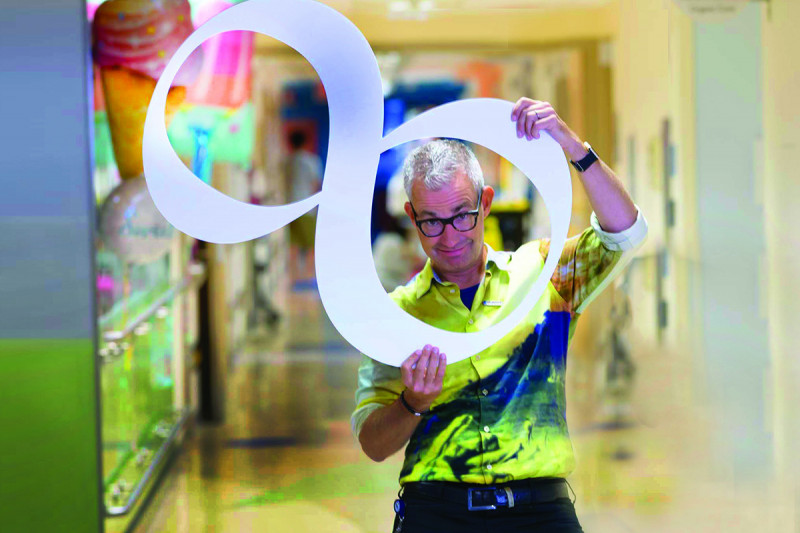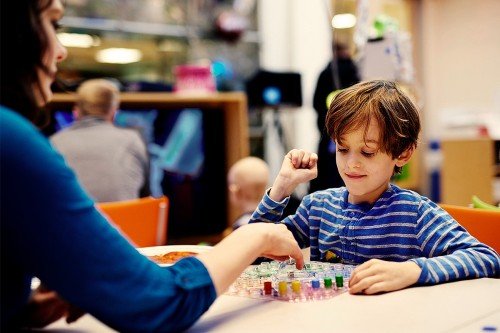
Jaap-Jan “J. J.” Boelens joined MSK Kids in 2018 as Chief of the Stem Cell Transplantation and Cell Therapy Service. Some of our MSK Kids patients asked him the questions they were most curious about.
You’re a new doctor here at MSK Kids. Where did you come from? —James, 4
I moved from the Netherlands last August with my wife and my three girls, ages 17, 14, and 7, plus our two cats and our horse. It was not easy to move the whole family, but they were all excited to take this step. The Netherlands is pretty small, and we were looking for some adventure.
Why did you come to MSK Kids? —Julia, 13
Coming here was an opportunity for me to give kids treatments that could give them a second life — a very long second life, like six or seven decades. It’s giving them their whole life back after they have been so sick. It is very gratifying.
Your shirts are really cool! How do you pick them? —Emily, 11
That’s a very important question, Emily! They need to be a little bit colorful, and they need to be a certain motif or theme. They are usually by a couple of designers who have shops on the Internet. My favorite depends on the day, my mood, the weather, the season, deadlines, how busy I am — it all factors in!
What are you studying? —Naomi, 18
That’s a big question with a long answer, Naomi. I have been studying bone marrow transplants (BMTs) for the past 15 years. I noticed that in general, the process wasn’t standard from start to finish. So I started to analyze how the chemotherapy and immunotherapy we gave before a transplant affected how the immune system rebuilt itself afterward. We looked at everything — the drugs and the dose, and how much of the drugs were in the blood — and then asked how all of that related to survival outcomes in each patient. The blood levels of the drug in the body after we administer the medication — what we call drug exposure — is a really good way to predict a child’s response to treatment. After we adjusted the dose based on weight and other variables, and started measuring the actual drug levels in the body, we figured out how to get to a consistent drug exposure for everyone. The result was that we could better predict the rebuilding of the immune system after transplant. Plus, it increased survival chances and there were fewer dangerous side effects for the child.
What is different about getting a transplant at MSK? —Lucy, 12
Over the past ten years we have made major progress in making BMTs safer and more effective for children. At MSK Kids, half of the BMTs we do are for diseases that aren’t cancer, so gene therapy is going to be a big game changer.
Here’s how it works, Lucy: We take a child’s own stem cells, modify them outside the body, and then give the child their gene-corrected cells back after chemotherapy. Because we are using a kid’s own cells, there is no risk of graft-versus-host disease, which is when the new cells attack the body. I predict that gene therapy will be available for most noncancerous blood diseases in five to ten years. We already have access to gene therapy for some diseases in clinical trials here at MSK Kids. We also have chimeric antigen receptor T cell and other immunotherapy treatments, which rev up the body’s own immune system to fight cancer. It is such an exciting time!
What do you like to do when you’re not working? —Matthew, 8
Definitely travel, Matthew. And I like to be active. I like hiking and scuba diving.
What do you like best about New York? —Hector, 9
So many things, Hector! The city is really diverse, and the food is great. You can get everything here, and it’s super easy.
What has surprised you the most about MSK Kids? —Omar, 15
Lots of things, Omar, but probably the large number of patients we get to see here. I really want more people to know about MSK Kids, especially about BMTs and cellular therapy. We have so many more resources than other centers do, and we want to be able to share what we learn here in a way that makes it easier for other doctors around the world to help more kids.








